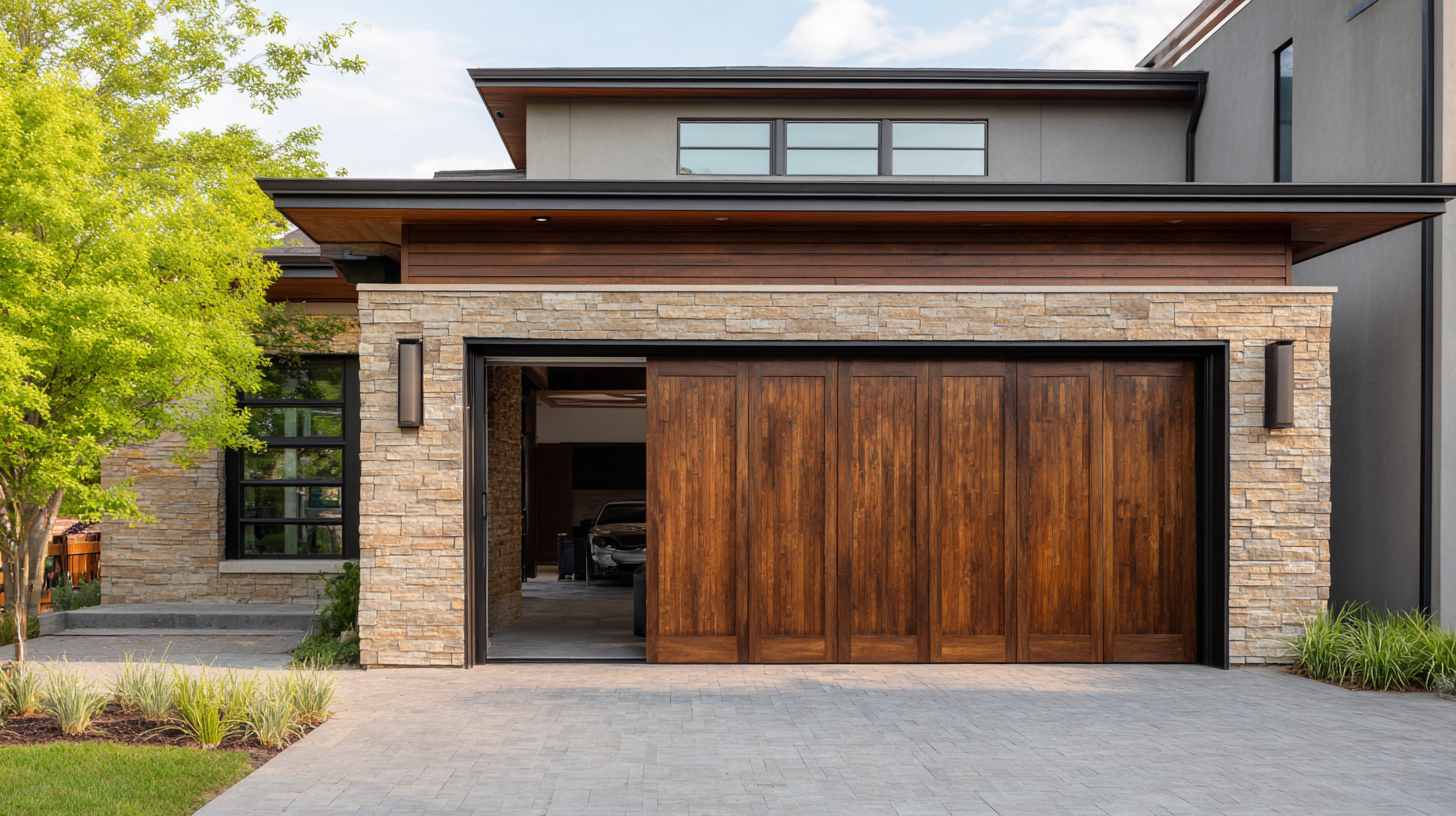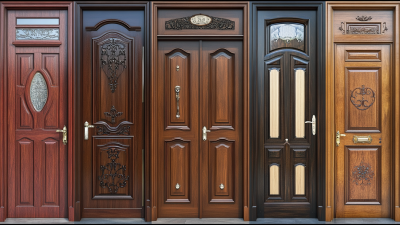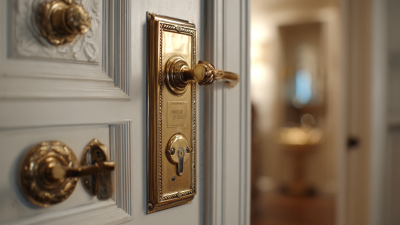Maximizing Energy Efficiency: The Impact of Residential Doors on Your Home's Thermal Performance
In the quest to maximize energy efficiency within homes, the often-overlooked component of residential infrastructure, specifically residential doors, plays a crucial role in thermal performance. According to the Energy Information Administration (EIA), approximately 30% of a home's energy loss occurs through doors and windows, highlighting the significance of effective thermal insulation.
Furthermore, a report from the U.S. Department of Energy indicates that upgrading to energy-efficient doors can reduce heating and cooling costs by 10-15%. Selecting the right residential doors not only contributes to a comfortable living environment but also enhances energy conservation efforts, an essential consideration in the face of rising energy costs and environmental concerns.
By understanding the impact of residential doors on thermal management, homeowners can make informed decisions that lead to reduced energy consumption and a lower carbon footprint.

Energy Efficiency Ratings: Understanding Door Performance Metrics in Residential Homes
When considering energy efficiency in residential homes, door performance metrics play a pivotal role. Energy efficiency ratings, particularly the U-factor, indicate the rate of heat transfer through a door. A lower U-factor represents better insulation, meaning less heat escapes in the winter and less heat enters during the summer. According to the U.S. Department of Energy, doors with a U-factor of 0.20 or lower are classified as highly efficient, which can significantly contribute to reducing heating and cooling costs by up to 30%.

Additionally, the Solar Heat Gain Coefficient (SHGC) measures how much solar radiation is admitted through a door. For homes in warmer climates, a lower SHGC is preferable, minimizing unwanted heat gain and reducing reliance on air conditioning. The National Fenestration Rating Council (NFRC) states that doors with a SHGC of 0.25 or less can reduce cooling costs effectively in sunny areas. By choosing doors with optimal energy performance ratings, homeowners can enhance their thermal performance and combat rising energy expenses while contributing to sustainable living practices.
The Role of Insulated vs. Non-Insulated Doors in Thermal Resistance and Energy Loss
When considering the thermal performance of a home, the choice between insulated and non-insulated residential doors plays a crucial role. According to the U.S. Department of Energy, a significant percentage of heat loss in homes stems from poorly insulated doors, accounting for approximately 10-20% of total energy loss. Insulated doors, designed with energy-efficient materials, minimize thermal bridging, thereby enhancing the overall energy performance of a residence. Reports indicate that replacing a traditional non-insulated door with an insulated model can yield energy savings of up to 30%, particularly in extreme climates.
Additionally, the thermal resistance, or R-value, of a door is an essential factor in energy efficiency. Insulated doors typically have R-values ranging from 5 to 7, while non-insulated doors usually hover around 1 or less. This stark contrast means that insulated doors not only reduce the amount of heat transfer but also help maintain a stable indoor temperature, ultimately leading to lower energy bills. Investing in insulated doors is not just an upgrade; it’s a strategic move towards creating a more sustainable and cost-effective living environment.
Maximizing Energy Efficiency: The Impact of Residential Doors on Your Home's Thermal Performance
| Door Type | Thermal Resistance (R-Value) | Estimated Energy Loss (kWh/year) | Average Cost ($) | Lifespan (Years) |
|---|---|---|---|---|
| Non-Insulated Door | 0.50 | 1500 | 150 | 20 |
| Insulated Steel Door | 3.00 | 720 | 400 | 30 |
| Insulated Fiberglass Door | 4.00 | 600 | 500 | 25 |
| Wood Door (Solid Core) | 2.00 | 900 | 600 | 20 |
How Proper Sealing and Weatherstripping Can Reduce Energy Costs by Up to 30%
The efficiency of a home's energy consumption is greatly influenced by its doors, especially when it comes to thermal performance. Proper sealing and weatherstripping are critical in preventing unwanted air leaks that can lead to significant energy loss. When doors are not adequately sealed, conditioned air can escape while outdoor air enters, forcing heating and cooling systems to work harder to maintain a comfortable indoor climate. This inefficiency not only affects comfort levels but can also lead to higher energy bills.
Implementing effective weatherstripping techniques can be one of the most straightforward and cost-effective solutions for homeowners. By sealing gaps around doors, energy costs can be reduced by up to 30%. Materials such as foam tape, V-strip, and door sweeps can be utilized to enhance insulation. Homeowners should regularly inspect their doors for wear and tear and replace any worn weatherstripping. This proactive approach not only improves energy efficiency but also contributes to the overall longevity of the doors and the comfort of the home.
Maximizing Energy Efficiency: The Impact of Residential Doors on Your Home's Thermal Performance
Proper sealing and weatherstripping of residential doors can significantly impact a home's energy efficiency, potentially reducing energy costs by up to 30%. The chart above illustrates the comparative energy cost savings achieved with different types of door sealing effectiveness.
Choosing Energy Star Certified Doors: Benefits to Homeowners and Environmental Impact
Choosing Energy Star certified doors can significantly enhance a homeowner's energy efficiency while also benefiting the environment. These doors are designed to meet strict energy performance criteria set by the Environmental Protection Agency (EPA), ensuring superior insulation that reduces heat transfer. By minimizing drafts and maintaining stable indoor temperatures, Energy Star certified doors can lead to substantial savings on heating and cooling costs. Homeowners can enjoy a comfortable living environment, even during extreme weather conditions, without the burden of skyrocketing energy bills.
Additionally, the environmental impact of choosing Energy Star doors is noteworthy. By improving a home's thermal performance, these doors help decrease overall energy consumption, which in turn reduces greenhouse gas emissions associated with energy production. This contributes to a smaller carbon footprint, promoting sustainability and environmental health.
As more homeowners opt for energy-efficient solutions, the cumulative effect can lead to significant positive changes in energy use patterns, ultimately supporting global efforts in combating climate change. Investing in Energy Star certified doors not only enhances the comfort and cost-efficiency of a home but also aligns homeowners with a more sustainable future.
Calculating Energy Savings: The Long-Term Financial Benefits of Upgrading Your Home’s Doors
Upgrading your home's doors can yield significant long-term financial benefits, particularly when it comes to energy savings. According to the U.S. Department of Energy, heat loss and gain through doors accounts for about 10-15% of a home's total energy use. By investing in energy-efficient door options, such as those with better insulation properties and lower thermal conductivity, homeowners can drastically reduce this expenditure. For instance, Energy Star-rated doors can save homeowners from $200 to $500 annually on energy bills, depending on your climate and the size of your home.
The financial advantages become even clearer when considering the lifespan of these upgrades. A study by the National Association of Realtors highlights that homeowners can expect a return on investment of approximately 70% for energy-efficient door installations when they sell their homes. Additionally, the increased comfort from maintaining consistent indoor temperatures can contribute to improved quality of life and reduced dependency on heating and cooling systems. In the long run, not only do new doors enhance the thermal performance of your home, but they also represent a smart financial decision amidst rising energy costs.

Related Posts
-

Ultimate Resource for Understanding Residential Doors Trends and Innovations in 2023
-

Troubleshooting Common Issues with Best Residential Doors: A Global Procurement Perspective
-

Discover the Finest Outdoor Doors Crafted by China's Leading Manufacturers
-

Exploring the Unique Features of Various Home Door Styles and How to Choose the Right One
-

Solutions for Enhancing Home Security with Residential Doors
-

How to Choose the Perfect Residential Door for Your Home Decor

